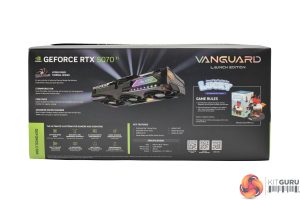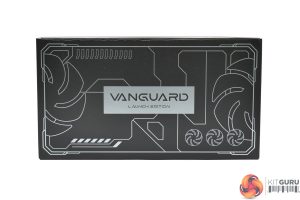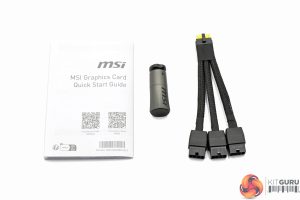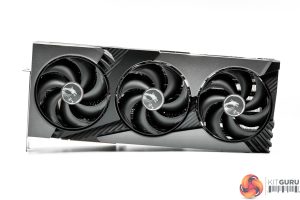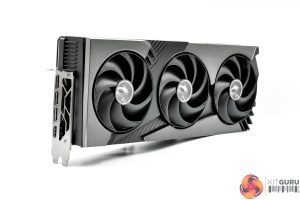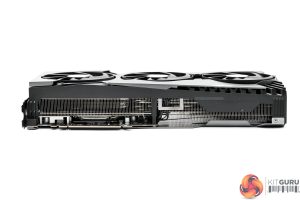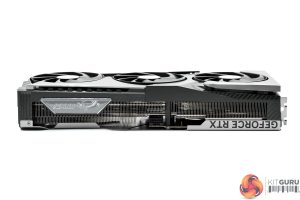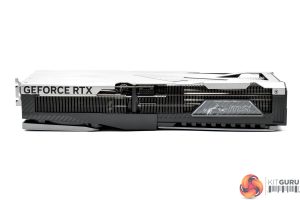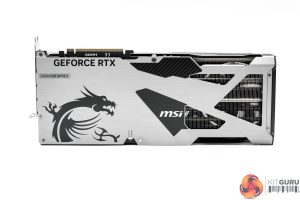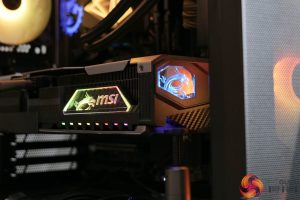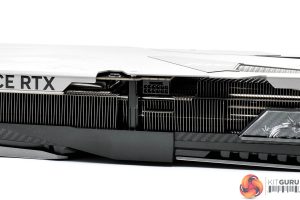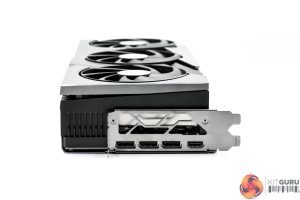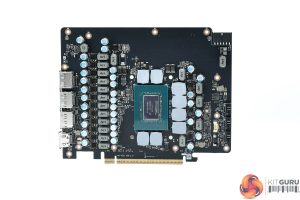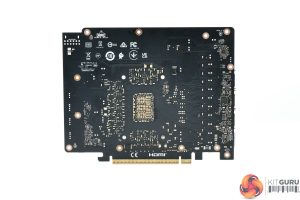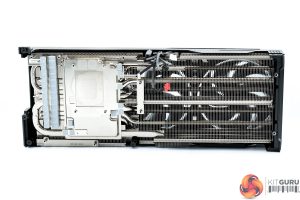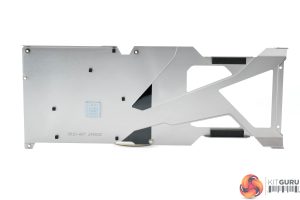The MSI RTX 5070 Ti Vanguard SOC ships in a large black box – technically, we have the Launch Edition which comes with some extras in the box, but the graphics card itself is the same.
On the back, MSI highlights some key features of the card itself, as well as the included accessories.
Inside we find another box, and this houses the accessories including the quick-start guide, a GPU support holder, as well as the triple 8-pin power adapter.
You also get a unique Lucky the Dragon toy in the box – there's a few different options you could get, it's not really my thing but it may appeal to some people.
Above we can also see the GPU support in action – it's basic but effective at preventing any unwanted sag.
The graphics card itself looks fairly similar to MSI's Suprim family, with a slightly blocky aesthetic, though the shroud is mostly dark grey, but with some carbon fibre-style sections. It's nice and monochrome though, so it should fit in your system regardless if you have a specific colour scheme or not.
We can also note the three Stormforce fans, each of which measures 100mm in diameter. These form part of MSI's ‘Hyper Frozr' thermal design, and we take a look at the internals further down the page.
In terms of its size, the Vanguard SOC is a big card, measuring 357 x 151 x 66 mm, so it's over three slots thick and is very long – definitely worth checking this will fit if you have a more compact case! MSI lists the weight at 1945g, too.
The front side is home to the GeForce RTX and MSI logos, the latter of which acts as one of the card's RGB zones.
As for the backplate, MSI has opted for a single piece of metal that extends the full length of the card, but there's a few cut-outs to allow air to pass directly through the heatsink, which should help cooling performance. There's more carbon fibre-style sections on the backplate, too.
We can also note a dual BIOS switch, where MSI offers a choice between the Gaming or Silent modes, the former offering a higher clock speed but more aggressive fan curve.
Here we can see the RGB lighting in action, with a total of three zones – it adds a nice bit of bling without being too ‘in your face', but you can always turn it off if that is your preference.
Power is of course supplied by the 12V-2X6 connector, with the adapter shown above. Display outputs consist of three DisplayPort 2.1 and one HDMI 2.1 connectors.
Looking now at the PCB, it's quite densely packed, offering 15 phases for the GPU, and 3 for the memory. Monolithic Power Systems MP87993 MOSFETs are used throughout, and these are rated at 50A. The GPU VRM is controlled by a Monolithic MP29816 controller, while a Monolithic MP2988 handles the memory VRM.
As for the cooler, MSI is continuing to use a vapour chamber, and this contacts both the GPU die and VRAM modules. Secondary baseplates are used to cool the MOSFETs. The heatsink utilises a total of eight heatpipes, which MSI says have been designed with a ‘square-shaped contact area' to improve overall cooling efficiency.
There is a single thermal pad on the backplate too, so it will draw some heat away from the rear of the PCB, but it's unlikely to make a significant difference to thermals.
 KitGuru KitGuru.net – Tech News | Hardware News | Hardware Reviews | IOS | Mobile | Gaming | Graphics Cards
KitGuru KitGuru.net – Tech News | Hardware News | Hardware Reviews | IOS | Mobile | Gaming | Graphics Cards



